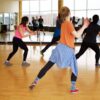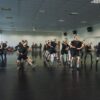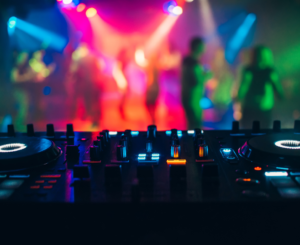Subtotal $0.00
5 Triggers and Proven Techniques for Dance SF Students
Dance is an art form that transcends language, culture, and time, transcending boundaries and uniting people in a shared passion. However, the exhilarating joy of dance can sometimes be overshadowed by feelings of anxiety. For dance students in San Francisco, this dance-induced anxiety can hinder their progress and diminish their enjoyment of this beautiful form. Understanding the triggers of dance anxiety and learning how to manage them is therefore crucial for their journey towards becoming accomplished dancers.
Anxiety in dance can stem from various sources, such as fear of public speaking, self-doubt, perfectionism, fear of failure, and social comparison. It can manifest in various forms, including stage fright, nervousness during practice, or even avoidance of dance altogether. Yet, it is crucial to remember that everyone, even seasoned professionals, experience bouts of anxiety and it doesn’t define one’s dancing prowess.
Our expert tips are designed to provide pragmatic solutions and strategies, enabling students to navigate through the anxiety labyrinth. These insights will help dancers build resilience, embrace their unique style, and develop a positive mindset, thereby enhancing their performance and overall dance experience. This is not just about overcoming anxiety, but about transforming it into a driving force that propels you towards mastery in dance.
Dance SF Students: How to Conquer Dance Anxiety and Excel on Stage
1. Fear of Being a Beginner
One common dance anxiety trigger, especially among new students, is the fear of being a beginner. It’s normal to feel apprehensive about starting something new, particularly when embarking on a dancing journey that involves learning new steps, techniques, and rhythms. However, it’s crucial to recognize that everyone starts as a beginner, and growth begins with taking those first, uncertain steps.
To overcome this fear:
- Embrace a growth mindset: Understand that everyone starts as a beginner and makes progress through consistent practice and patience. Believe in your ability to grow and learn with time and effort.
- Avoid comparisons: Focus on your progress and development rather than comparing yourself to more experienced dancers.
- Seek support: Connect with fellow Dance SF students who are also beginners, fostering a supportive network that grows and learns together.
2. Fear of Embarrassment
Another common dance anxiety trigger is the fear of embarrassment or looking foolish in front of others. Dance lessons often involve making mistakes and learning from them, which can feel intimidating and lead to anxiety.
To combat the fear of embarrassment:
- Recognize that mistakes are part of the learning process: Accept that you will make mistakes, and understand that they can be valuable learning experiences.
- Trust your Dance SF instructors: Our expert instructors are here to guide and support you, providing constructive feedback to help you improve and feel more confident.
- Practice self-compassion: Treat yourself kindly and with patience, allowing room for imperfection and growth on your dance journey.
3. Fear of Failure
The fear of failure can hold many Dance SF students back from fully embracing their dance lessons, leading to increased anxiety. This apprehension about failing – either in learning new techniques or not making progress fast enough – can create unnecessary stress and hinder the joy of dancing.
To address the fear of failure:
- Set realistic goals: Set achievable, specific goals for your dance lessons and track your progress as you work toward them, celebrating each milestone along the way.
- Foster resilience: When setbacks occur, view them as opportunities to learn and grow rather than failures that define your dance journey.
- Focus on the process, not the outcome: Enjoy the experience of learning and improving, releasing expectations of perfection or unrealistic progress.
4. Performance Anxiety
Performance anxiety is another prevalent dance anxiety trigger. Whether during a Dance SF class, an informal social dance, or a more formal performance, the pressure to perform well in front of others can lead to increased anxiety and hindered self-expression.
To manage performance anxiety:
- Utilize relaxation techniques: Deep breathing exercises, visualization, and progressive muscle relaxation are all techniques that can help reduce anxiety before performing.
- Rehearse and practice: Adequate preparation and practice can help build confidence and reduce anxiety in performance situations.
- Reframe your perspective: View performances as opportunities to share your passion for dance and grow as a dancer, rather than an evaluation of your self-worth or ability.
5. Social Anxiety
Many dance students experience social anxiety, which can stem from feeling self-conscious around others or worrying about how their dance partners will perceive them. This concern can distract from the enjoyment and collaborative aspects of dance lessons, hindering personal growth and development.
To overcome social anxiety:
- Foster connections: Connect with fellow Dance SF students and instructors, fostering a supportive community where everyone feels accepted and encouraged.
- Communicate openly: Share your concerns or anxiety with your dance partners or instructors, who can often provide valuable reassurance and advice.
- Challenge negative thought patterns: Recognize and address inaccurate or unhelpful thoughts about yourself and others, replacing them with more positive and constructive perspectives.
Additional Strategies for Overcoming Dance Anxiety
In addition to addressing common dance anxiety triggers, these general strategies can help Dance SF students manage anxiety and enhance their dance experience:
- Develop a pre-class routine: Establishing a consistent pre-class routine, such as stretching, deep breathing, or positive affirmations, can help reduce anxiety and foster a focused mindset.
- Maintain a healthy lifestyle: Adequate sleep, regular exercise, and a well-balanced diet can contribute to better mental and physical well-being, reducing overall anxiety levels.
- Seek professional help if necessary: If dance anxiety becomes overwhelming or interferes with everyday life, it may be beneficial to seek professional guidance from a therapist or counselor who specializes in anxiety management.
Through a combination of understanding common dance anxiety triggers and employing practical strategies designed to address them, Dance SF students can reduce anxiety and approach their dance lessons with increased confidence and enthusiasm. By nurturing resilience, self-compassion, and a growth mindset, dancers can transform their experience on the dance floor and cultivate lasting joy in their dance journey.
Embrace Anxiety-Free Dance Lessons at Dance SF
By understanding and overcoming common dance anxiety triggers, you can confidently step onto the dance floor and get the most out of your Dance SF experience. Dance is not only a physical journey, but also an emotional one that requires dedication, resilience, and self-compassion. As you address these common anxiety triggers and embrace a supportive learning environment at Dance SF, your dancing experience will thrive, paving your way to joyful self-expression.
Don’t let anxiety hold you back from enjoying and progressing in your dance journey. Connect with Dance SF today to discover our welcoming community, expert instructors, and life-changing dance lessons in San Francisco! Sign up now to begin your anxiety-free transformation on the dance floor, and unleash your full potential as a dancer with Dance SF by your side.











Comments are closed